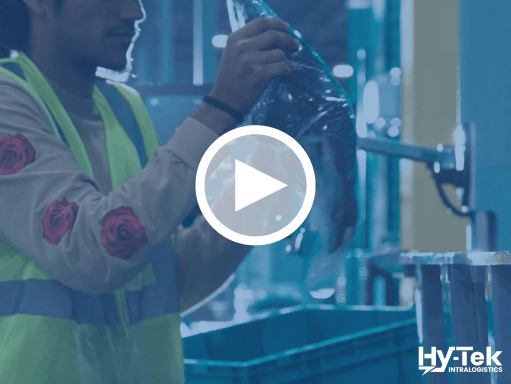The process of gathering data begins at the initial idea phase. Implementing material handling automation can be overwhelming. As technology advances, the material handling tasks within a facility that can be automated are virtually endless.
Many people know that they have deficiencies within their facility but are uncertain of where to focus their automation efforts to get a positive ROI. The area of focus for automation to provide the best ROI is different for every project. Some common pain points where automation can make sense are areas where labor is a concern (both labor reduction and retention), tasks that require precision, safety issues, and repetitive actions.
Regardless of where the focus of the automation is, there are two factors to focus on when calculating the savings of an ROI:
- Quantitative Factors: These factors include reducing and retaining labor, increasing throughput, and saving space in the facility. Quantitative factors provide numerical data points to help drive the decision-making process. These factors are easier to place a monetary value on for ROI calculation.
- Qualitative Factors: These factors include service benefits and accuracy improvements. They are more subjective and unique to the application. Qualitative factors can be harder to monetize but can have a significant impact on proving a positive ROI. Once you determine where to focus your project, there are some other key steps that can be taken to help provide a better ROI and for overall project success:
- Determine the Planning Horizon – Projects shouldn’t be planned for the present. Future business growth projections need to be considered for project planning. An automation project that gets outgrown before the ROI can be achieved is a catastrophe. A typical planning horizon is at least five years.
- Plan for Expansion – Planning for additional growth or potential future business changes may not have a direct impact on the project ROI, but not planning for future expansion may have a huge impact on the potential ROI of future projects. Without an expansion plan, the cost of future projects and the impact that those projects have on the operation can be negative.
- Build in Flexibility – Business is constantly changing. Anticipating potential changes and designing a system that is functional when things change is important. Do not get locked in with hard automation that can’t grow and change with the needs of the business.
- Properly Size the System – Properly sizing the system is key to creating an accurate ROI case. A system that is too small may cost less but will not fit the needs of the business. A system that is too large will make the ROI goals unachievable. Getting accurate data and business growth projections to properly size a system is imperative.
With data being the driving force to build an accurate ROI case, it’s crucial that the data being used is correct.
This starts with making sure the system is being planned for the correct timeframe. A rule of thumb is to plan for at least five years of business growth when considering automation while simultaneously planning for future expansions.
The initial planning horizon takes into account the immediate needs of the business. The expansion plan builds in flexibility and allows the business to react quickly as a business grows and changes. Along with identifying the correct planning horizon, determining the correct capacity is needed for building an accurate ROI case.
Planning a system to the overall average capacity will undersize the system for peak season. Using the peak capacity can drive the cost of the system up considerably. Often, a system that can support a reduced peak for the system’s design year is the best fit. Building in flexibility to the system design can be a good way to handle peak surges. This flexibility can include additional operating hours, bringing in additional equipment for peak season (a system design that supports short-term equipment leasing like many Robotics-as-a-Service providers is a good example of this), or designing a system that will function with additional, temporary labor, when required.
Once it’s determined where to focus automation and the data is gathered to build an automation plan, it’s important to determine if the ROI case fits the needs of the business.
With labor challenges in many markets, the traditional target of an automation project providing a return in two years or less is being extended. Defining what a successful ROI is for a project needs to be done on a case-by-case basis and needs to consider the unique challenges each business faces.
If the success of a potential automation project is being determined based on an ROI case, the ROI being prepared needs to be accurate. Knowing where to focus automation, providing accurate data to build a plan, and defining what is a successful ROI for the business are all crucial elements to creating a successful project.




